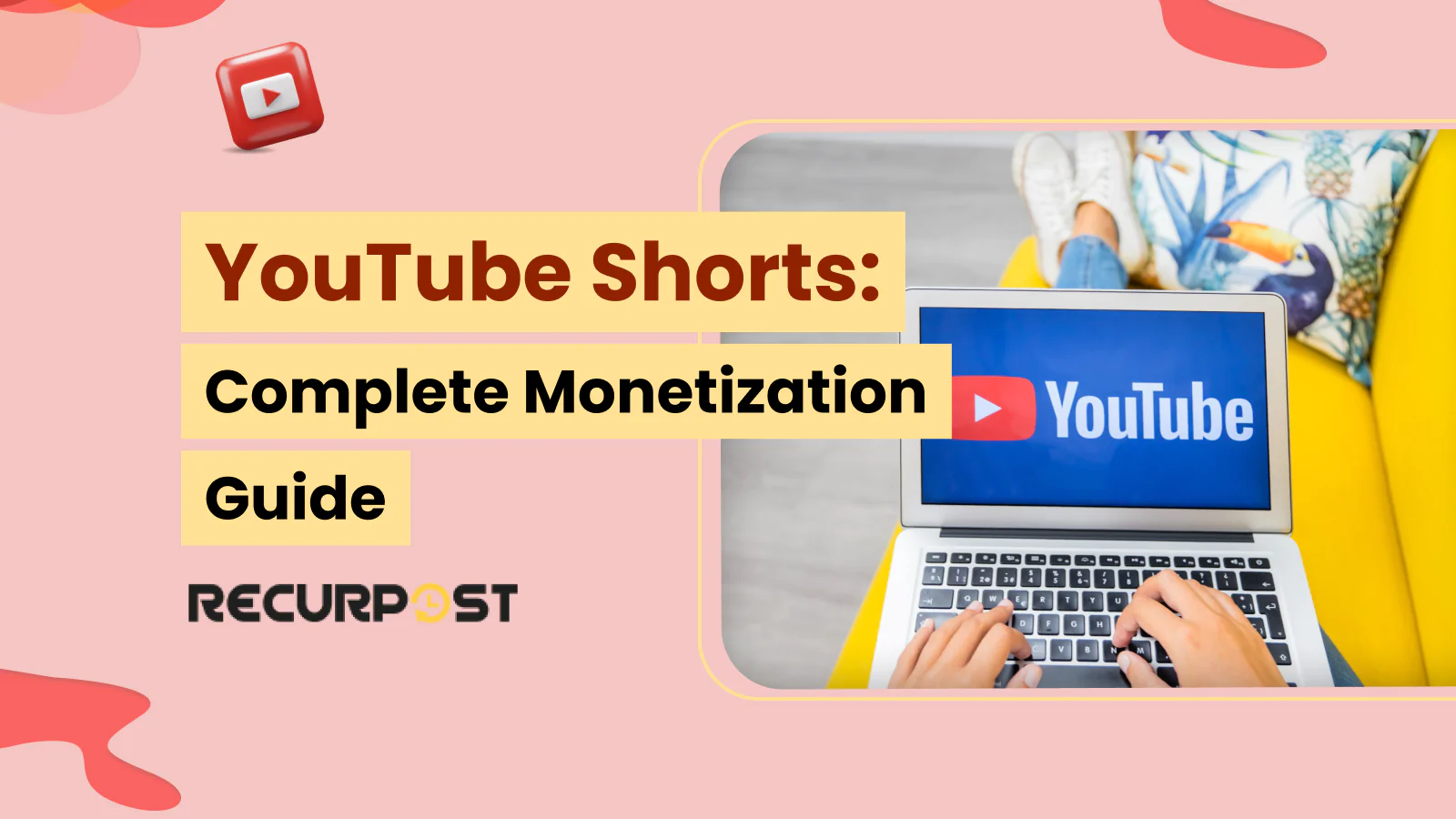Can you make money on YouTube Shorts? Absolutely. YouTube Shorts monetization is not just a buzzword—it’s a real opportunity for creators and brands alike. If you’re managing social media for a brand or overseeing content for clients, knowing how to create YouTube Shorts and monetize them is vital.
YouTube Shorts is YouTube’s answer to the short-form video trend, competing directly with TikTok and Instagram Reels, with the YouTube Shorts app functionality integrated directly into the main YouTube mobile application. But what sets Shorts apart is its integration into YouTube’s broader ecosystem, which includes robust monetization options. For social media managers and agencies, understanding these options is key to maximizing revenue and driving growth for your clients.
In this article, I’ll walk you through everything you need to know about YouTube Shorts monetization. We’ll cover how you can make money, the steps required to start earning, and the best practices that will help you get the most out of your content.
Let’s dive in and explore the world of YouTube Shorts monetization.
Monetization Eligibility and Requirements
To start making money with YouTube Shorts, it’s crucial to understand the eligibility criteria. Before diving into the specifics, let’s address a common question: Can you make money from YouTube Shorts? The answer is yes, but there are certain requirements you need to meet.
YouTube Partner Program (YPP) Overview
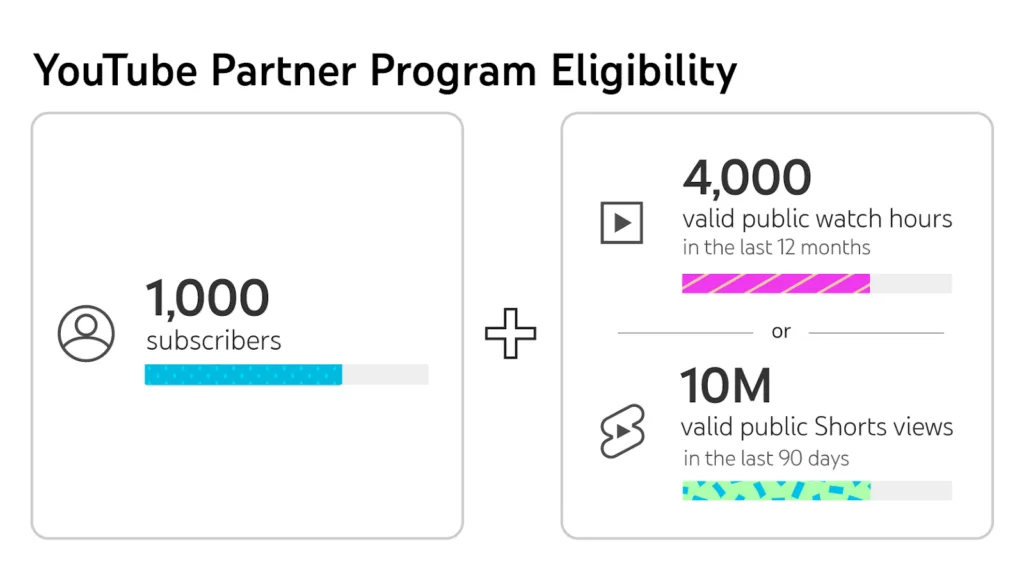
[Source: YouTube Blog]
To monetize YouTube Shorts, you must first join the YouTube Partner Program (YPP). This program allows creators to earn money through ad revenue, among other monetization methods. However, the eligibility requirements for Shorts are slightly different compared to long-form videos:
- Subscribers: You need at least 1,000 subscribers.
- Watch Hours or Views: There are two paths to qualify:
- 4,000 public watch hours on your long-form content over the past 12 months, or
- 10 million public Shorts views within the last 90 days.
For social media managers, understanding these thresholds is key to guiding your clients toward meeting these goals. The more engaged your client’s audience, the quicker they can meet these requirements and start earning.
Steps to Join YouTube Partner Program for Shorts
Here’s how to get started:
1. Build Your Audience: Focus on growing your subscribers to reach that 1,000-subscriber mark. Consistent, high-quality content will help you get there faster. For tips on generating subscribers, check out best youtube marketing strategy.
2. Meet the View Threshold: Choose whether to focus on long-form content or Shorts. If Shorts are your primary focus, aim for that 10 million views in 90 days.
3. Apply for YPP: Once you meet the requirements, apply through YouTube Studio. The application process typically takes about a month.
Do YouTube Shorts make money? Absolutely, but like anything worth doing, it requires a bit of planning and consistent effort. Once you’re in the YPP, you can start exploring various revenue streams, which we’ll cover next.
How Does YouTube Shorts Monetization Work?
Once you’ve joined the YouTube Partner Program (YPP), you can start earning money through YouTube Shorts monetization. But the big question is, how does this work? And what options do you have to maximize your earnings?
Ad Revenue Sharing
One of the primary ways to make money from YouTube Shorts is through ad revenue sharing. Here’s how it works:
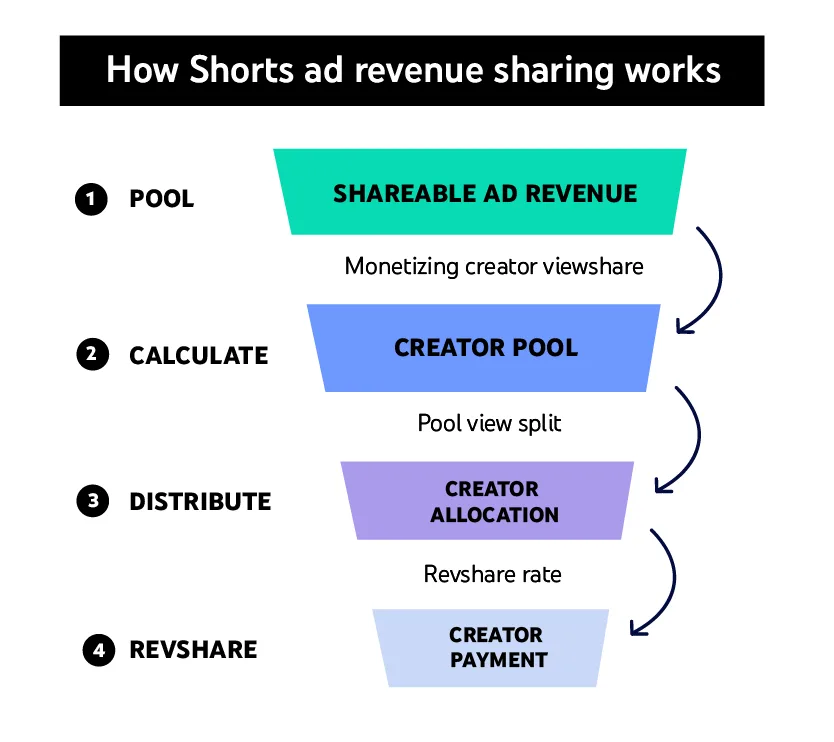
1. Ad Revenue Pooling and Distribution
When you upload a Short that is eligible for monetization, YouTube pools all the ad revenue generated from ads displayed between Shorts in the Shorts feed. This pooled revenue is then distributed among creators based on their share of total views across all Shorts on the platform during that period.
2. Music Licensing Impact
One important aspect to consider is the use of music in your Shorts. If your content includes licensed music, YouTube allocates part of the ad revenue to the music rights holders before distributing the rest to the creators. This means if your Short uses popular music, your share of the revenue might be lower compared to Shorts without music.
3. Revenue Share Percentage
Creators earn 45% of the revenue allocated to them based on their share of views. The remaining 55% is retained by YouTube, covering the cost of platform operations and other fees. This 45% share is consistent across the board, regardless of whether music is used or not.
This monetization model is designed to encourage creators to produce engaging, viral content that draws in viewers, as the more views your Shorts accumulate, the larger your share of the revenue pool.
Fan Funding Options
Beyond ad revenue, fan funding offers another lucrative way to monetize YouTube Shorts. Here’s how:
1. Super Thanks
Viewers can purchase and send a “Super Thanks” as a one-time donation to show their appreciation for a Short. This feature allows direct financial support from fans.
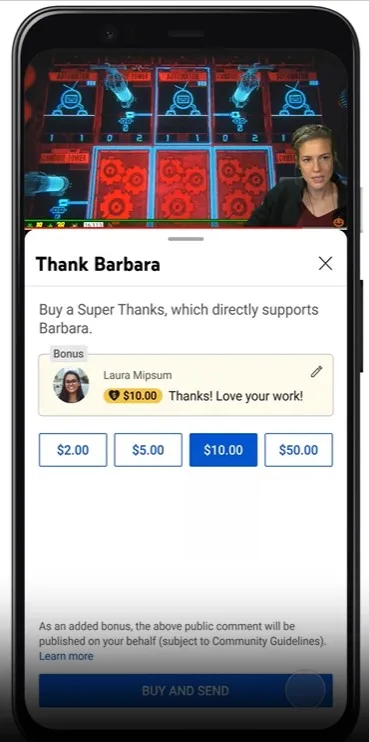
2. Super Chats and Super Stickers
During live streams or premieres, fans can pay to have their messages or stickers highlighted. This is a great way to engage with your audience while also boosting revenue.
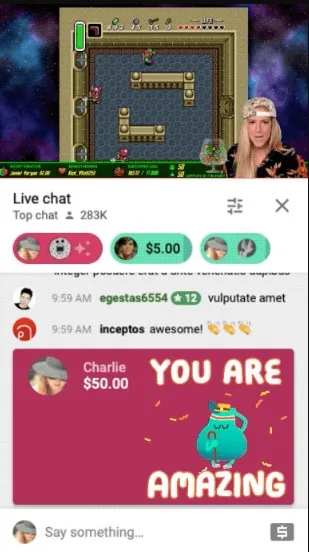
3.Channel Memberships
With at least 500 subscribers, your clients can offer channel memberships, where viewers pay a monthly fee for perks like exclusive content, badges, and emojis. These memberships can include exclusive Shorts, providing another layer of content that generates recurring revenue.
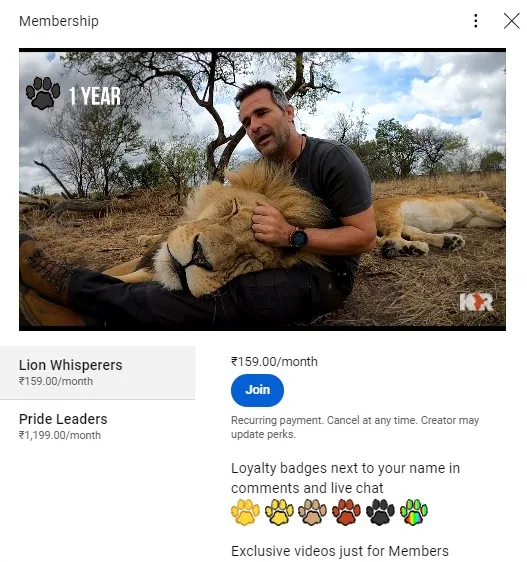
Affiliate Marketing and Product Integration
Affiliate marketing can be a powerful tool in your monetization strategy. Here’s how it can work with YouTube Shorts:
1. Affiliate Links
You can add affiliate links in the video description or directly in the Shorts, encouraging viewers to purchase products through these links. Each sale made through your link earns you a commission.
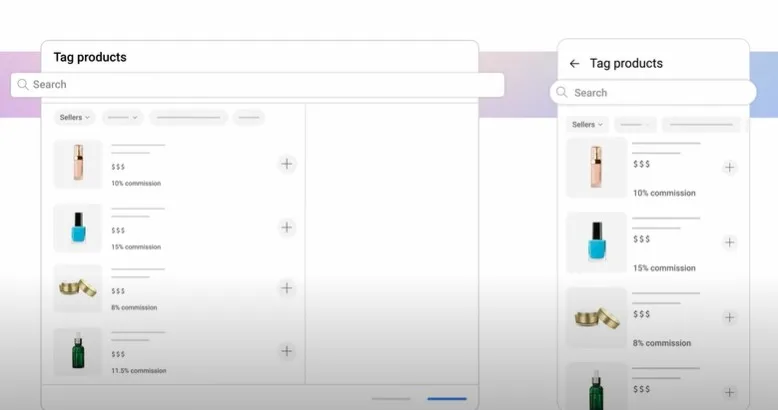
2. YouTube Shopping
This feature allows you to showcase products directly within your Shorts. When viewers click on these products and make a purchase, you earn a commission, adding another revenue stream to your Shorts.
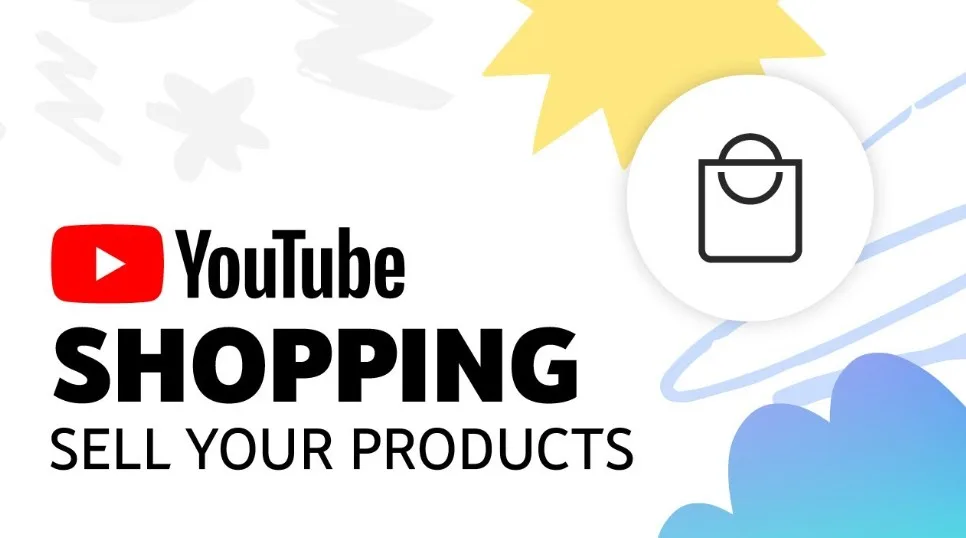
For brands, integrating product links within engaging Shorts can drive significant sales, making it a win-win for both the creator and the brand.
Can you make money from YouTube Shorts through these methods? Absolutely. The combination of ad revenue, fan funding, and affiliate marketing creates a robust system for earning income from your content. However, the key to maximizing this income lies in understanding and leveraging these options effectively.
Advanced Monetization Strategies
To truly maximize earnings from YouTube Shorts, it’s important to explore more advanced monetization strategies beyond just ad revenue and fan funding. This section will cover brand deals, sponsorships, and cross-promotion techniques that can significantly boost your income.
Brand Deals and Sponsorships
Brand deals and sponsorships offer a highly effective way to monetize your Shorts, especially if you have a niche audience or a significant following. Here’s how you can leverage these opportunities:
- Brand Deals: These involve specific agreements between a creator and a brand to promote or feature a product or service within their Shorts. Typically, these are one-time collaborations where you create content specifically for the brand. The compensation is usually a flat fee or performance-based, depending on the agreement.
- Sponsorships: Unlike brand deals, sponsorships are often ongoing relationships where a brand supports your content in exchange for regular promotion. This could involve a series of Shorts where the brand is featured either prominently or subtly.
For social media managers, it’s crucial to help your clients identify potential brand partners that align with their content and audience. Creating a strong media kit and reaching out to brands with well-crafted proposals can open the door to these lucrative opportunities.
Tips for Securing Brand Deals and Sponsorships
- Identify the Right Brands: Focus on brands that align with the content and values of the channel. The more relevant the brand, the more likely they are to engage.
- Create a Media Kit: Include key metrics like subscriber count, average views per Short, engagement rates, and demographics. This helps brands see the value in partnering with your client.
- Craft a Compelling Pitch: Personalize your outreach. Highlight why the brand and the channel are a perfect match and what the channel can offer in terms of exposure and audience engagement.
Cross-Promotion with Long-Form Content
Another effective strategy is to use Shorts to promote your long-form videos. Here’s why this works:
- Boost Long-Form Content: Shorts can serve as teasers for longer videos. By linking to a full video in the description or in the comments, you can drive traffic to your monetized content.
- Increase Watch Time: More views on your long-form videos contribute to the 4,000 watch hours needed for YPP, which is essential if you’re not hitting the 10 million views on Shorts.
How to Implement Cross-Promotion
- Tease Upcoming Content: Use Shorts to give a sneak peek of a new long-form video. This generates excitement and curiosity among viewers.
- Link Directly to Long-Form Videos: Always include a call-to-action (CTA) that directs viewers to watch the full video for more in-depth content.
By combining brand deals, sponsorships, and cross-promotion, you can significantly enhance your client’s revenue streams from YouTube Shorts monetization. These strategies not only boost immediate earnings but also help in building long-term relationships with brands and increasing overall channel engagement.
Best Practices for Maximizing Revenue
Once you’ve established a foundation for YouTube Shorts monetization, focus on best practices that can maximize your revenue. This section will provide actionable tips for creating engaging content, optimizing your Shorts for visibility, and leveraging analytics to continuously improve performance.
Creating High-Engagement Shorts
The first step to maximizing revenue is to ensure your Shorts are engaging. Here are some tips to help you achieve that:
- Grab Attention Quickly: The first few seconds of your Short are crucial. Use bold visuals, compelling hooks, green screen effects, or immediate action to captivate your audience right from the start.
- Use Trends Wisely: Participating in trends can boost your visibility, but ensure that the content still aligns with your brand or message. Choose an appropriate background that reinforces your brand identity, as jumping on a trend just for the sake of it can come off as inauthentic.
- Keep it Short and Sweet: Even within the standard YouTube Shorts length of 60 seconds, shorter is often better. Focus on delivering a single, clear message or action to keep viewers engaged throughout.
For more detailed strategies on creating effective YouTube Shorts, check out How to Make YouTube Shorts.
Optimizing Metadata and SEO
To maximize the visibility of your Shorts, you need to optimize the metadata and ensure your content is discoverable. Here’s how:
- Keyword-Rich Titles: Incorporate relevant keywords like “YouTube Shorts monetization”, “create YouTube Shorts”, and “can you make money on YouTube Shorts” in your titles to improve searchability.
- Effective Use of Tags: Tags help YouTube’s algorithm understand your content. Use a mix of broad tags (e.g., “YouTube Shorts“) and specific tags related to your niche.
- Compelling Descriptions: Write clear, concise descriptions that include primary keywords and provide context for your Short. Also, use the description to link to related content or affiliate products.
Leveraging Analytics for Continuous Improvement
Understanding your performance metrics is vital for refining your strategy and maximizing YouTube earning from Shorts. Here’s what to focus on:
- View and Engagement Analytics: Monitor metrics like views, views, likes, comments, and YouTube Shorts watch time. High engagement often leads to better placement in the Shorts feed, which can significantly increase views and revenue.
- A/B Testing: Experiment with different types of content, thumbnails, and posting times to see what resonates most with your audience. Use these insights to fine-tune your approach.
- YouTube Calculator Tools: Utilize YouTube money calculators or YouTube calculators to estimate potential earnings based on your current performance. These tools can help you set realistic revenue goals and measure progress.
By implementing these best practices, you can significantly enhance the effectiveness of your YouTube Shorts monetization strategy. The goal is not just to create content but to create content that performs well and generates consistent income.

If you’re looking to expand your business’s online presence, integrating YouTube for business into your broader marketing strategy is essential. Whether you’re already leveraging social media platforms, email marketing, or SEO, YouTube can complement these efforts by providing engaging video content that resonates with your audience.
To optimize your earnings through YouTube Shorts and other social media platforms, consider implementing diverse monetization strategies. This includes leveraging affiliate marketing, securing brand sponsorships, and creating compelling content that drives engagement. Understanding your audience’s preferences and tailoring your monetization efforts accordingly can significantly enhance your success.
For further insights on monetization strategies across various platforms, check out this comprehensive guide on how to monetize your content.
Case Studies and Success Stories
To truly understand the potential of YouTube Shorts monetization, let’s look at real-world examples of creators and brands that have successfully leveraged Shorts to generate significant income. These case studies offer insights into effective strategies and the tangible results they can produce.
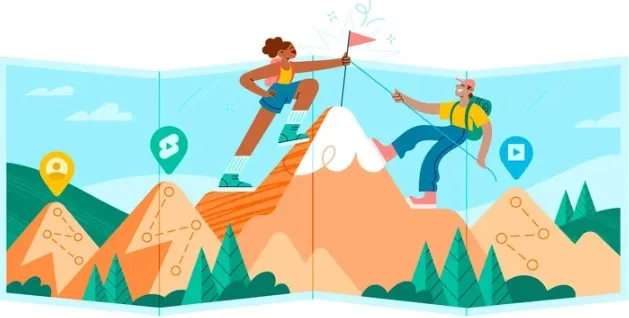
Notable Creators and Brands
Sydney Morgan
Sydney Morgan, a beauty creator with over 7.6 million subscribers, is a prime example of how YouTube Shorts monetization can be a game-changer. She started her journey during the pandemic and quickly realized the potential of Shorts. Despite having a hybrid channel with both long-form content and Shorts, Sydney reported that Shorts have become her primary revenue source. Her story highlights the importance of embracing new formats and adapting content strategies to capitalize on emerging opportunities.
Mrwhosetheboss
Arun Maini, better known as Mrwhosetheboss, has 18.2 million subscribers and is another success story. Specializing in tech content, Arun found that Shorts allowed him to reach new audiences faster than ever before. In fact, after incorporating Shorts, his channel reached its second billion views in less than ten months—a feat that took ten years with long-form content alone. Although the revenue from Shorts hasn’t surpassed that of long-form videos, it has significantly contributed to covering production costs, making his content creation process more sustainable.
Rebecca Rogers
Rebecca Rogers, a former high school teacher, turned to YouTube Shorts during the pandemic to connect with her students. Her humorous and relatable content quickly went viral, transforming her into a full-time content creator. Through Shorts, Rebecca was able to earn enough to buy a home and a car, demonstrating the financial viability of Shorts as a primary content format.
Lessons Learned
These success stories provide valuable lessons for social media managers and agencies:
- Diversify Content: Incorporating Shorts alongside long-form videos can significantly expand your audience reach and engagement. Each format serves a different purpose and audience, so a mixed strategy often yields the best results.
- Consistency Pays Off: Regularly posting high-quality Shorts is crucial. The more content you produce, the more opportunities you have to go viral and attract brand deals.
- Leverage Data: Successful creators like Sydney Morgan and Mrwhosetheboss continuously analyze their content performance. Use tools like YouTube calculators to track earnings and adjust strategies accordingly.
These case studies underscore that YouTube Shorts monetization is not only feasible but can be highly lucrative if approached strategically. Whether through ad revenue, brand deals, or cross-promotion, the key is to remain adaptable and data-driven.
Future Trends and Opportunities in YouTube Shorts Monetization
As YouTube Shorts continues to grow in popularity, so do the opportunities for creators and brands to monetize their content. Staying ahead of these trends is crucial for maximizing revenue and maintaining a competitive edge. In this section, we’ll explore emerging features, tools, and the long-term potential of YouTube Shorts monetization.
Emerging Features and Tools
YouTube is constantly evolving, introducing new features that can enhance YouTube Shorts monetization. Here are some trends to watch:
- YouTube Shopping Integration: One of the most promising developments is the deeper integration of e-commerce into YouTube Shorts. Creators can now showcase products directly within their Shorts, making it easier for viewers to make purchases. This feature not only boosts affiliate marketing opportunities but also opens up new revenue streams through direct product sales.
- Enhanced Analytics: YouTube is rolling out more sophisticated analytics tools that give creators deeper insights into their Shorts’ performance. These tools can help creators understand which content resonates most with their audience, allowing for better optimization and higher earnings.
- New Monetization Modules: YouTube is expected to introduce additional monetization modules, specifically designed for Shorts. These might include expanded ad placement options or new ways to earn through fan interactions, similar to how Super Chats and Super Thanks currently operate.
Sustainability of Shorts as a Revenue Stream
Can you make money on YouTube Shorts in the long term? While the revenue per view from Shorts is generally lower than from long-form videos, the sheer volume of views that Shorts can generate makes them a viable revenue stream. Here’s what to consider:
- Consistency and Volume: Success with Shorts often depends on the volume and consistency of uploads. While individual Shorts might generate lower earnings, the cumulative effect of a consistent posting schedule-especially when paired with scheduling YouTube shorts, can lead to significant revenue over time.
- Diversification: Relying solely on ad revenue from Shorts might not be sustainable in the long term. The key to success lies in diversifying income streams—combining ad revenue, affiliate marketing, brand deals, and fan funding.
- Growing Audience and Reach: Shorts are a powerful tool for growing your audience, which in turn can boost your overall YouTube earnings. Even if Shorts themselves aren’t the primary revenue driver, they can serve as an entry point to your channel through smart YouTube promotions, leading viewers to longer, more monetizable content.
As the platform continues to evolve, YouTube Shorts monetization will likely become more sophisticated, with new opportunities emerging for those who stay informed and adaptable. For social media managers, social media team members, and agencies, keeping an eye on these trends and incorporating them into your strategies will be key to driving continued success.
Conclusion
YouTube Shorts monetization offers a dynamic opportunity for creators and brands to generate revenue, whether through ad sharing, fan funding, or brand partnerships. While it requires meeting certain thresholds and consistently producing engaging content, the potential rewards are significant. By staying updated on emerging trends and optimizing your strategy, you can effectively turn YouTube Shorts into a sustainable income stream.
For social media managers and agencies, integrating these strategies into your clients’ broader social media packages can drive growth and maximize earnings across the board. As the platform continues to evolve, those who adapt and innovate will see the most success in YouTube Shorts monetization.
Frequently Asked Questions
1. Can YouTube Shorts be monetized?
Yes, YouTube Shorts can be monetized through the YouTube Partner Program, ad revenue sharing, fan funding, brand deals, and affiliate marketing. To start earning ad revenue, you need to meet the specific YPP requirements, including having 1,000 subscribers and 10 million public Shorts views in the last 90 days.
2. How much do YouTube Shorts pay for 1,000 views?
For every 1,000 views on YouTube Shorts, creators typically earn between $0.01 and $0.07. This low revenue per mille (RPM) is due to the ad revenue-sharing model specific to Shorts, where earnings are pooled and distributed based on overall performance.
3. Can I monetize YouTube Shorts without 1,000 subscribers?
You cannot directly monetize YouTube Shorts through ad revenue without meeting the YouTube Partner Program (YPP) requirements, which include having 1,000 subscribers. However, other forms of monetization, like fan funding (Super Thanks, Super Chats, etc.), can be accessed with just 500 subscribers.
4. Do YouTube Shorts get views easily?
Yes, YouTube Shorts can get views more easily compared to long-form videos, especially if they tap into trends or have a strong hook. The Shorts feed is designed to promote new and engaging content, giving Shorts a higher chance of being discovered by a large audience.
5. How much money do you get for 20,000 Shorts views on YouTube?
For 20,000 views on YouTube Shorts, you can expect to earn anywhere between $0.20 and $1.40, depending on various factors like audience location and engagement. Although the earnings might seem low, remember that Shorts can generate large volumes of views, which can add up over time.
6. How much do YouTube Shorts pay for 1 million views?
For 1 million views, YouTube Shorts typically pay between $100 and $700, depending on factors such as the audience and ad engagement. This range highlights the potential earnings from viral Shorts, although it’s generally lower compared to long-form content.
7. Can a 1-minute video make money on YouTube?
Yes, a 1-minute video can make money on YouTube, especially if it’s a Short that gains significant views. Once you meet the YouTube Partner Program requirements, even short videos can generate ad revenue.
8. What types of content perform best on YouTube Shorts?
Content that is entertaining, educational, or taps into current trends tends to perform best on YouTube Shorts. Short, snappy videos with a clear message or call-to-action are most effective. Content that capitalizes on challenges, how-tos, or quick tips also tends to gain traction quickly.
9. Is it worth focusing on YouTube Shorts compared to long-form content?
Yes, focusing on YouTube Shorts can be worth it, especially for rapidly growing your audience and increasing visibility. While long-form content typically generates higher ad revenue, Shorts are excellent for driving engagement and funneling viewers to your other content, which can indirectly boost overall channel earnings.
10. What are the common mistakes to avoid with YouTube Shorts monetization?
Common mistakes include neglecting to optimize metadata (titles, tags, descriptions), failing to engage with the audience, and not utilizing multiple monetization methods. Additionally, over posting without maintaining content quality can lead to subscriber fatigue.
11. Does the algorithm treat YouTube Shorts differently than regular videos?
Yes, the YouTube algorithm treats Shorts differently, primarily because they appear in a dedicated Shorts feed designed for vertical, quick-consumption content. Shorts are more likely to be shown to viewers who are new to your channel, making them a powerful tool for reaching a broader audience. The algorithm favors Shorts that quickly capture viewer interest, which is why the first few seconds are critical.
12. How does using popular music in Shorts affect monetization?
Using popular music in your Shorts can increase the chances of your video being discovered, as many viewers search for content based on trending songs. However, it’s important to note that if you use licensed music, a portion of the ad revenue will go to the music rights holders, which can reduce your overall earnings.

Saurabh Chaturvedi is a content writer at RecurPost. Specializing in social media management and marketing, Saurabh is dedicated to crafting engaging and informative articles. His passion for clear, exciting content keeps readers eager for more.
